Hastings Bathing Water Improvement Scheme (2016)
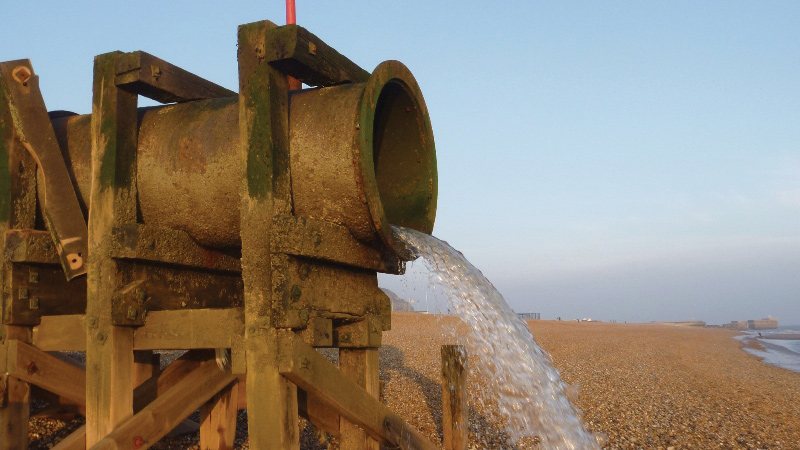
Denmark Place outfall onto Hastings Beach - Courtesy of MWH
Hastings Beach on the southern coast of the UK was identified at risk of failing the European Union revised Bathing Water Directive. If the bathing water failed, Hastings Borough Council (HBC) would be legally required to put up signs warning the public of poor water quality. MWH (now Stantec UK) targeted ‘high beneficial’ interventions by identifying and understanding the root cause of the pollution. Pollution sources and pathways were identified as largely due to misconnections or defective dual manholes. MWH, Southern Water, the Environment Agency (EA) and HBC worked together to rectify all identified issues on the public and private sewerage network. These interventions improved the quality of Hastings bathing water. On 5 November 2015 Defra officially announced the designation of Hastings bathing water as ‘Good’, exceeding the target of ‘Sufficient’. This was a sustainable solution, delivered significantly under budget and demonstrated the importance and efficiency of targeted site investigations to establish and rectify the root cause.
Introduction
In 2005 the EU agreed to a revised Bathing Water Directive (BWD) with much tighter water quality standards to those previously set with an emphasis on providing information to the public. The directive has four levels of classification; ‘Excellent’, ‘Good’, ‘Sufficient’ and ‘Poor’. In 2015, the Directive came fully into force.
Hastings was identified as 1 of 25 bathing waters around the UK at risk of being classified as ‘Poor’ and failing the revised BWD. If the bathing water failed Hastings Borough Council (HBC) would be legally required to put up signs warning the public of poor water quality. Therefore, Southern Water set itself a target of achieving a minimum of the ‘Sufficient’ standard by 2015.
The potential for failure caused major concern amongst a number of organisations and local residents especially since it is estimated that the tourist industry supports approximately 15% of the Hastings population generating in excess of £234m per year. As a results, an executive group was formed to work together to resolve the issues.
Hastings Bathing Water Quality Executive Group (HBWQEG) was a consortium set up between Southern Water, EA, HBC, Hastings & Rother voluntary action group Clean Seas Please and MP for Hastings & Rye Amber Rudd (Secretary of State for Energy and Climate Change). All parties involved were driven to achieve the same outcome of at least a ‘Sufficient’ bathing beach.
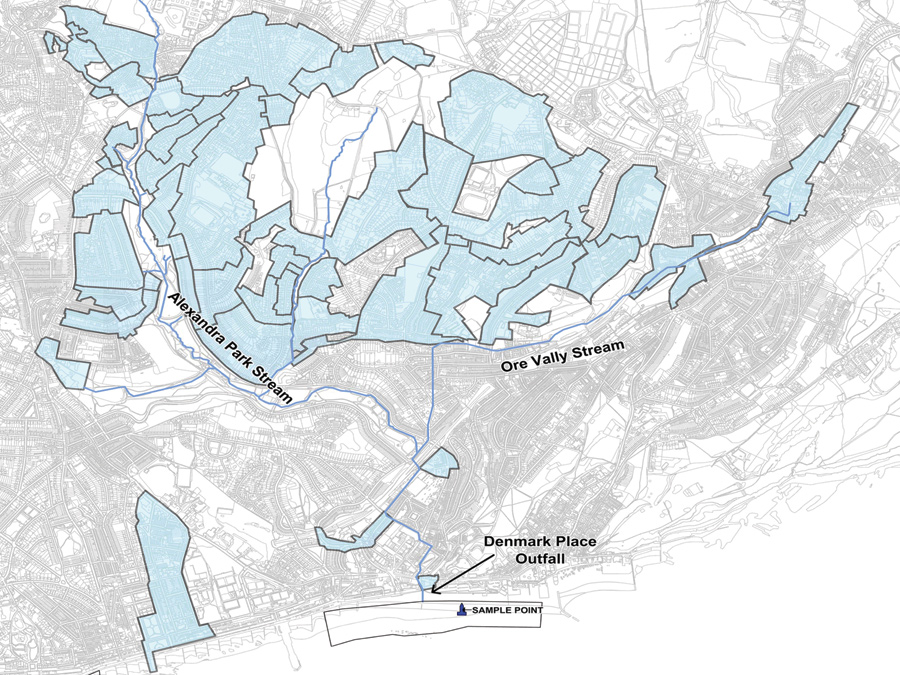
Hastings surface water sub-catchments – Courtesy of MWH
Undertakings
Southern Water commissioned MWH to complete the Hastings Bathing Water Improvement Scheme in April 2014. This posed a challenge with just 12 months for a full catchment investigation and for any design and civil works to be complete by the beginning of the 2015 bathing season.
Identifying the issues
The Hastings drainage catchment is heavily urbanised with historic and modern developments. It covers an area of approximately 1,350 hectares and has a population of approximately 56,000. The surface water systems are predominantly located to the north of the Hastings catchment in areas developed post 1930.
Alexandra Park Stream is the largest surface water system in the Hastings catchment. The stream is an open channel from its source in the north of the catchment and discharges via a series of ponds located in Alexandra Park. The stream is culverted prior to discharging at Denmark Place outfall located on Hastings Beach.
There are three overflows in the catchment which are permitted to spill to Alexandra Park Stream or Hastings bathing water. The designated sampling point for Hastings bathing water is located 60m to the east of Alexandra Park Stream outfall.
Alexandra Park Stream had been identified by the EA as a source of high bacterial load discharging onto Hastings bathing beach and therefore impacting on the bathing water quality. The executive group discussed and agreed that Southern Water would scope three options for consideration to address the pollution issues.
- Diverting Alexandra Park Stream flows to treatment.
- Extension of the outfall.
- A full catchment investigation to identify the pollution source.
Options involving the diversion of Alexandra Park Stream and the extension of the outfall were not recommended following a scoping exercise by MWH, as both options required a large investment of customer money for solutions which did not resolve the issues and were not considered economically or environmentally viable. In addition both of these schemes could not be delivered by March 2015.
In September 2014 Southern Water, working in partnership with MWH, began a full catchment investigation to discover bacterial sources to the Alexandra Park Stream catchment. A huge challenge lay ahead to complete a pollution source identification programme with a very limited timescale. Adding to the challenge was the unknown of what may or may not be found in the upstream network.
Investigation and remediation work was also carried out by the EA and HBC alongside the MWH investigations, primarily focusing on improving the ponds and reservoirs through Alexandra Park Stream. This work included planting reed beds and clearing back vegetation to improve the filtration through the ponds and increase the surface area exposed to sunlight.
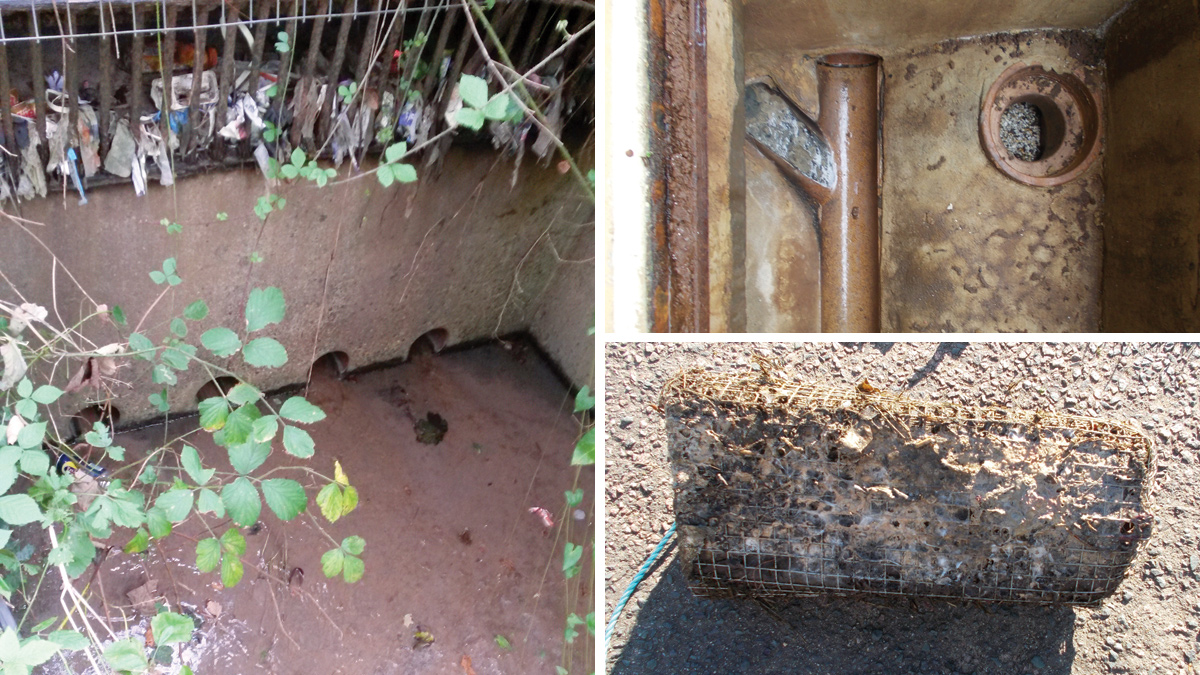
(left) Ragging at outfall into Alexandra Park Stream, (top right) defective open dual manhole and (bottom right) heavily polluted cage removed from surface water sewer – Courtesy of MWH
The investigation
Water quality and bathing beach standards are measured by E. coli and Intestinal Enterococci (IE) therefore, foul discharges entering the watercourse were the greatest concern. MWH carried out an assessment of the three overflows in the catchment to determine what risk they posed to the bathing water based on frequency and magnitude of pollution.
Following a review of historical spill events, it was concluded that the spill frequency of the overflows in Hastings did not occur regularly enough during the bathing season to have a significant effect upon the classification of Hastings bathing water.
An investigation then began to trace pollution sources into Alexandra Park Stream. Water quality sampling and cage surveys were commissioned for each of the 57 (No.) surface water outfalls discharging to Alexandra Park Stream. Following these results the sub-catchments were ranked high to low based on level of pollution.
Several sub-catchments were confirmed as being low risk to pollution following these surveys. However, nine sub-catchments were identified with a medium to high level of pollution and these areas were targeted with further cage surveys located at strategic points in the upstream network. This allowed the survey crew to identify pollution sources to street level so that property surveys could be scoped to trace individual foul and non-foul misconnections.
At the start of the project it was believed that misconnections would be one of the main sources of bacterial load entering Alexandra Park Stream. In general, foul property misconnections were found to have existed since the properties were built.
Non-foul misconnections such as sinks, washing machines and dishwashers were generally found to have existed as a result of house modifications. A total of 87 (No.) properties were found to have one or more elements misconnected, twenty of which were toilet misconnections.
There are a number of areas in Hastings which contain dual manholes. A dual manhole shares the surface water and foul sewers in a common manhole, usually with an open foul line and an enclosed surface water line with a cap for access or rodding point.
It was found during the investigations that in several cases, over time the caps over the surface water sewer have been removed, damaged or dislodged, meaning that during a storm event or as a result of blockages, cross contamination can occur between the foul sewer and the surface water sewer, allowing foul water to discharge to the watercourse. It was evident that this was a potential issue across Hastings.
Therefore a blanket lift and look manhole survey was commissioned across the surface water sub-catchments to identify any dual manholes on the private or public network which may require maintenance work to return them to their original operating design. This would remove the possibility of foul flows cross contaminating into the surface water network.
The largest identified single source of pollution into Alexandra Park Stream was a long standing blockage on the public sewer which caused seven neighbouring upstream properties to be continually discharging into the surface water network. Foul flows were found to be backing up from the blockage and spilling via four open dual manholes, located upstream, into the surface water network and thence indirectly misconnecting seven properties.
This one area alone is estimated to have contributed approximately 27.9 billion E.coli per day to the pollution issues in Alexandra Park Stream.
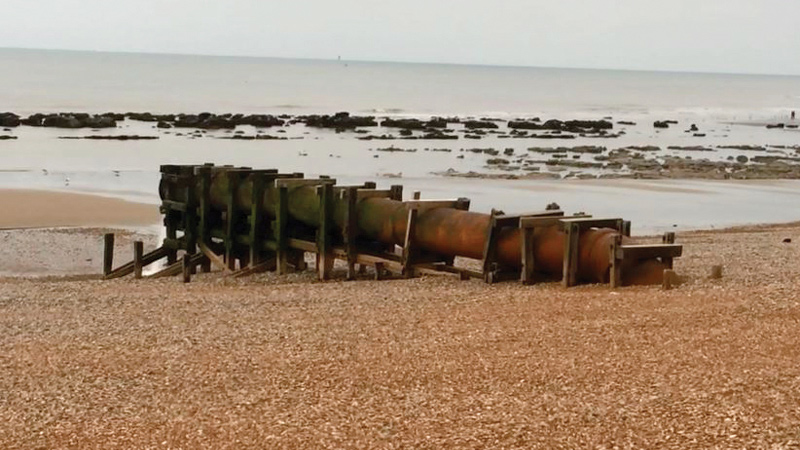
Denmark Place outfall – Courtesy of MWH
The solution
The solution involved removing all blockages and capping the open dual manholes to ensure no cross contamination between the surface water and foul flows can occur. MWH carried out checks on the hydraulic capacity of the network and flood risk in the area before any rectification work was complete.
MWH also undertook a phased approach on the solution, where Phase 1 involved the installation of a plug over the surface water sewer and monitoring of the installation to ensure no detriment in the area. Phase 2 involved the permanent sealing of the surface water cap.
By the close of the investigation MWH identified and carried out some level of maintenance work on 86 (No.) public dual manholes and passed on information to Hastings Borough Council on 82 (No.) private dual manholes for rectification action by the property owners. Each one of these dual manholes would have continued to be a potential pollution pathway if the defects had not been rectified.
Collaborative working
Southern Water carried out all necessary rectification and maintenance work in the surface water catchments identified on the public sewer network. Hastings Borough Council agreed to take action on any sewer defects which were identified on the private sewers, by notifying property owners and using enforcement action if required. This also included any work required on private open dual manholes.
The success of the project and the outcomes achieved for Hastings was largely due to the collaborative working of the Hastings Bathing Water Quality Executive Group (HBWQEG). Due to the large amount of revenue from the tourist industry in Hastings, the work carried out was generally well received by members of the public, even if it meant some rectification work was required on their property at their expense.
Throughout the project regular meetings were held with the HBWQEG to update stakeholders on the project progress and identification of pollution sources as they were discovered. An ethos among the group of sharing data helped to reduce unnecessary costs from rework and helped to focus the group on achieving real results.
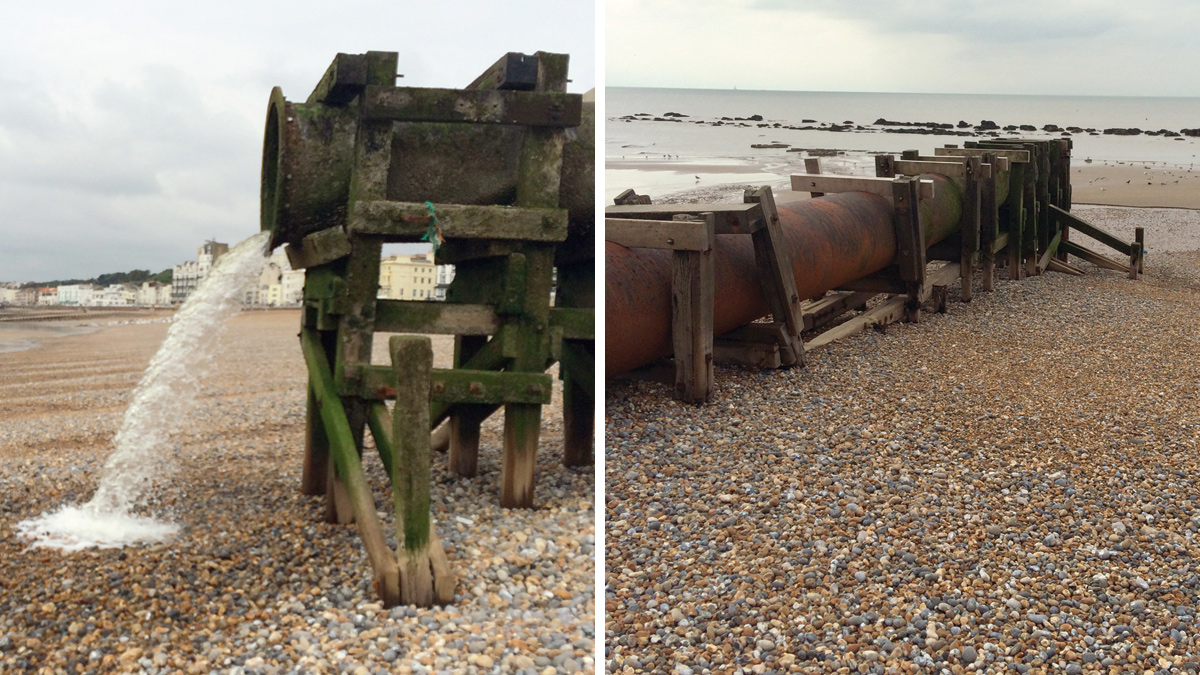
Denmark Place outfall – Courtesy of MWH
Conclusion
Several interventions have been undertaken to date to improve water quality. These localised improvements include capital schemes undertaken by Southern Water, sealing of dual manholes, removal of misconnected properties as well as initiatives undertaken by Hastings Borough Council and the EA to improve Alexandra Park Stream and the surrounding environment.
Southern Water, EA and HBC worked together to rectify all identified issues on the public and private network. These interventions improved the water quality of Alexandra Park Stream and therefore the bathing water. This was a sustainable solution as the building of large civil structures was avoided. This demonstrated the importance and efficiency of targeted site investigations to establish and resolve the root cause and collaborative working.
On 5 November 2015, Defra officially announced the designation of Hastings bathing water as ‘Good’ which exceeded the target of ‘Sufficient’.



